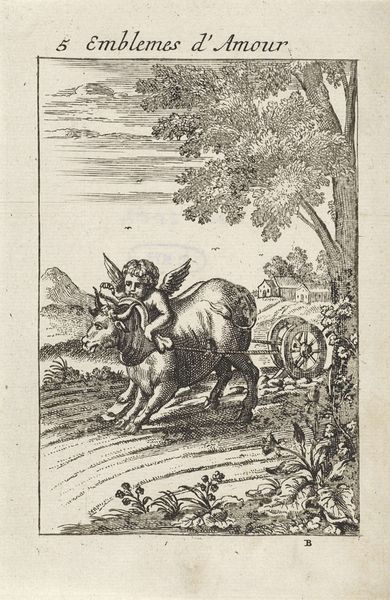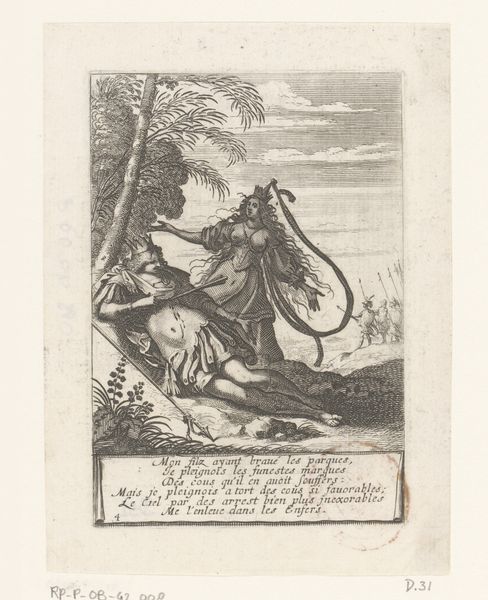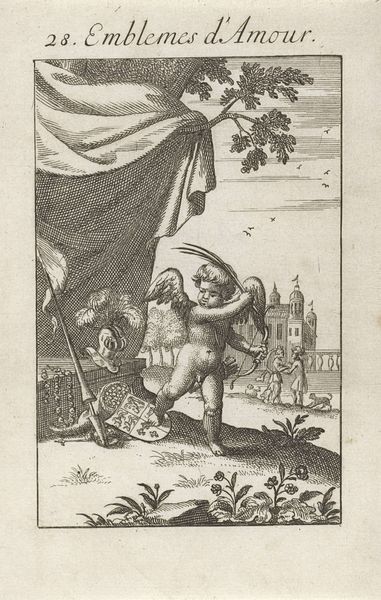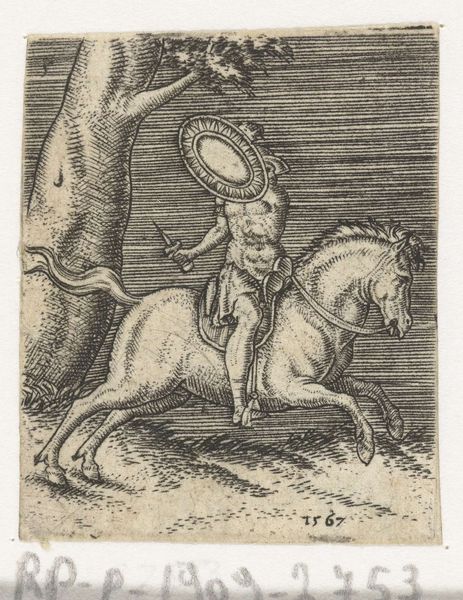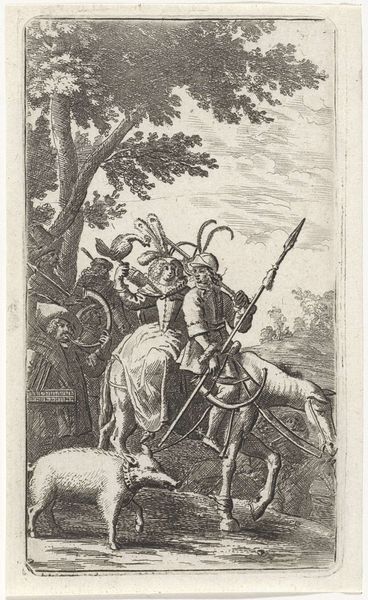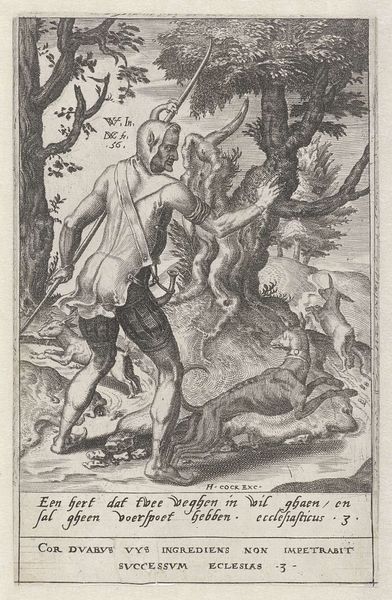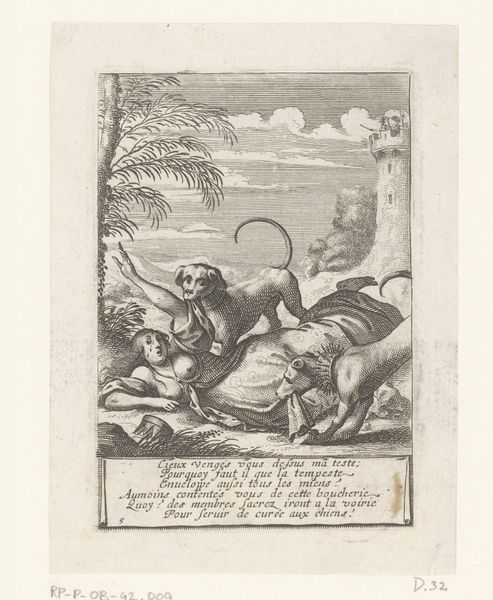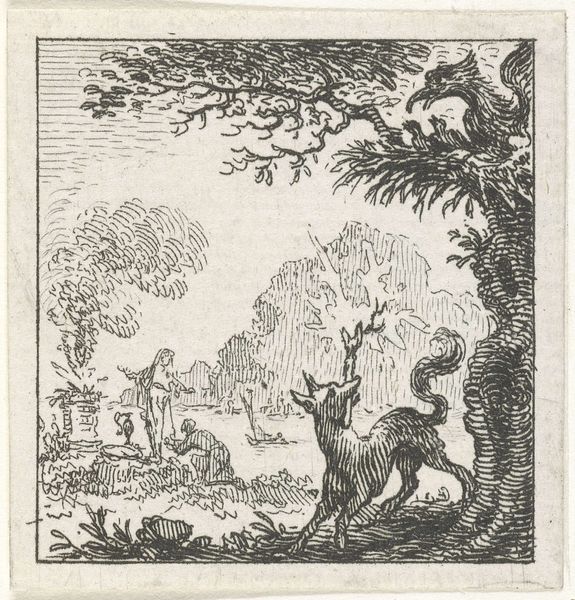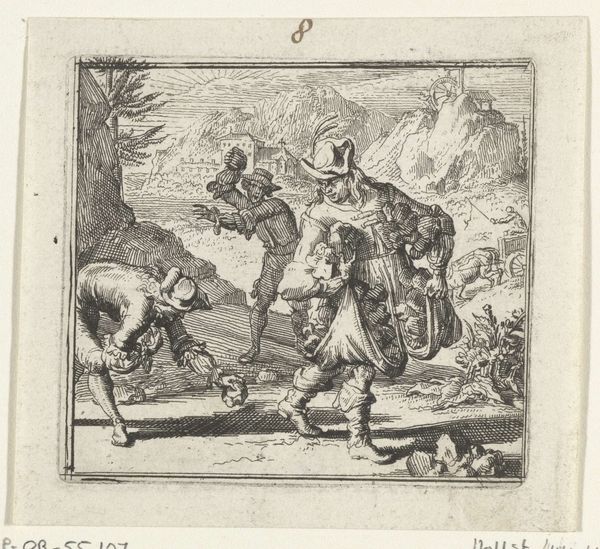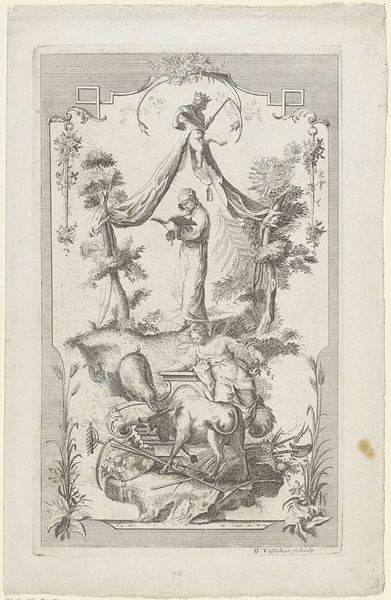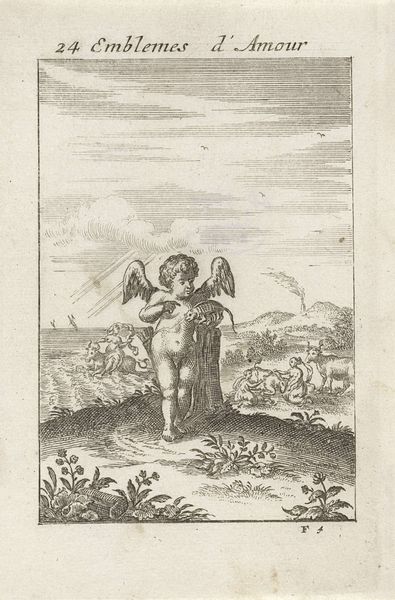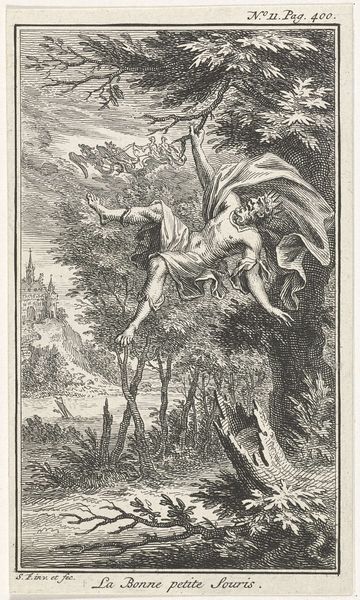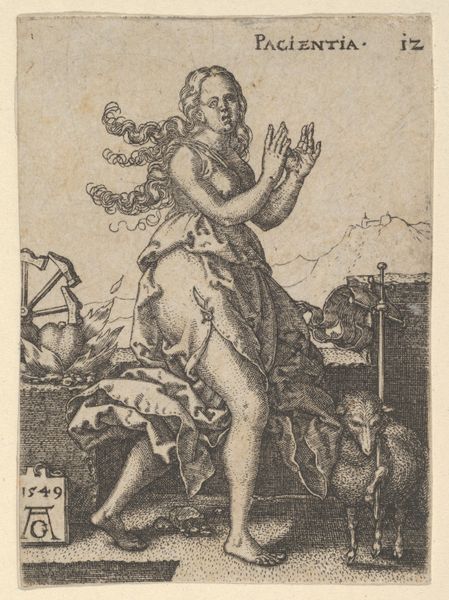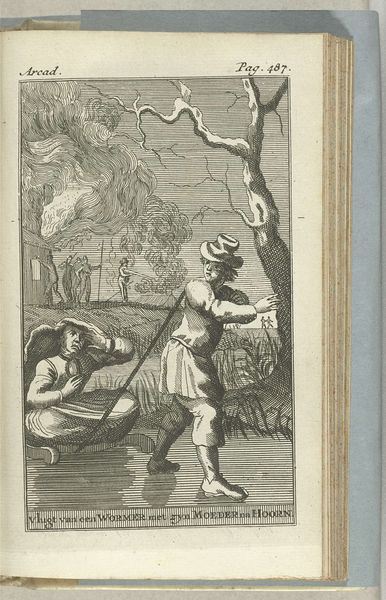
print, engraving
#
allegory
#
baroque
# print
#
pen illustration
#
old engraving style
#
landscape
#
figuration
#
line
#
engraving
Dimensions: height 95 mm, width 56 mm
Copyright: Rijks Museum: Open Domain
Editor: Here we have "Kind rijdend op een hert bij fontein met engel," or "Child riding a deer by a fountain with an angel," an engraving by Boëtius Adamsz. Bolswert from around 1590 to 1624, housed at the Rijksmuseum. The image depicts a child riding a deer toward a fountain. The details are intricate, and the landscape has an almost dreamlike quality. What strikes me is the symbolic quality. What do you see in this piece? Curator: What immediately catches my eye is how this image reflects the socio-political climate of the Dutch Golden Age. These allegorical scenes were very popular in the late 16th and early 17th centuries. The Latin inscription translates to "As the deer longs for streams of water, so my soul longs for you, O God," revealing the piece's purpose of imbuing civic life with spirituality. We can see that the baroque style emphasizes dramatic movement. What do you notice about the setting? Editor: I notice how the open landscape behind the child contrasts with the confined garden setting with the fountain and angel statue, creating a juxtaposition between freedom and religious virtue. It reminds me that public displays of virtue were the social norm. Does that sound about right? Curator: Absolutely. Consider the public function of engravings like this one. They weren't merely decorative. They shaped public perception, reinforcing the dominant socio-religious ideology, thus promoting spiritual fulfillment alongside social harmony. The choice of the engraving medium itself enabled wider dissemination and accessibility of moral lessons to various social strata. What did you think about the intended audience of this print? Editor: I hadn't considered that! It's clear now that this image goes beyond a simple representation. It shows how art serves societal functions and promotes ideas of the time. I initially viewed the scene rather simplistically. I see a layered artwork speaking to faith and culture. Curator: And hopefully, the ways that cultural and social forces influenced Bolswert's artistic decisions, leading to this particular rendering. Thank you for the insightful chat.
Comments
No comments
Be the first to comment and join the conversation on the ultimate creative platform.
